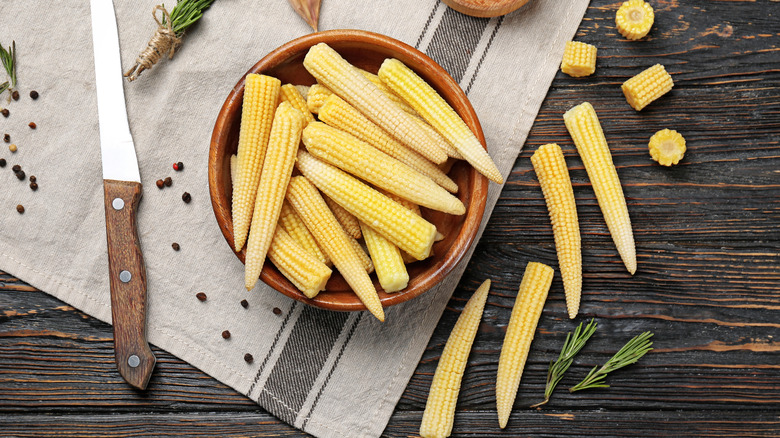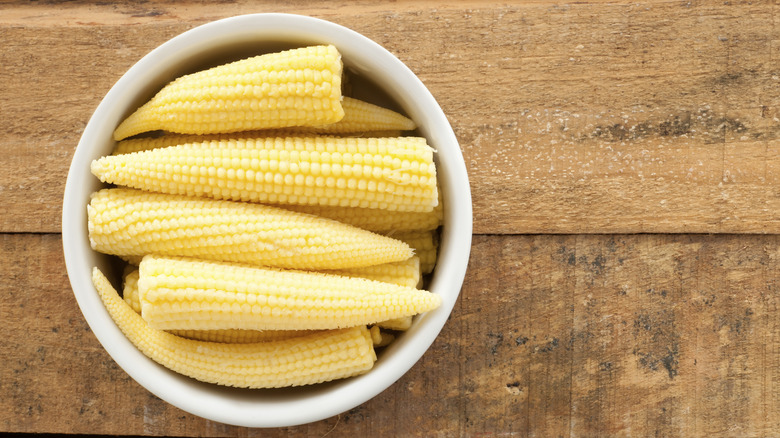Why It's Difficult To Find Fresh Baby Corn
Few foods so fittingly encapsulate the "small but mighty" moniker like baby corn — an ingredient that adds a crisp textural component to salads and stir fries. But, for as many dishes as you use it in, you'll probably never find it fresh. What gives? The "baby" in the crop's name doesn't just come from the fact that it's adorably miniature — it's because baby corn is just regular corn harvested early, before fertilization. (They quite literally are "baby corn.") Baby corn is so immature, in fact, that you eat the entire ear, cob and all.
The U.S. is the top corn producer in the world, cranking out 384 million metric tons of the stuff in the 2021-2022 harvest year alone. But baby corn is hardly grown in America, and most of the world's supply comes from Thailand. Primarily, it's grown in Nakhon Pathom, Suphanburi, and Kanchanaburi in central and western Thailand but is also cultivated in Nakhon Ratchasima and Chaiyaphum in the northeast.
Some neighboring countries, including Taiwan and Japan, receive fresh baby corn exports, but without the benefit of geographic proximity, chances are your baby corn is coming in a can. And because it's not commonly featured outside of East Asian cuisines and harvesting it is such a labor-intensive process, Thailand has the market for it quite "corn-erned."
Only Thai farmers have decided it's worth the effort
Baby corn is harvested soon after the corn silks first emerge, when the cob is 2 to 4 inches long. Also, due to the limited time in which baby corn develops, the crop requires a large amount of water. Most inconvenient of all, because baby corn is too delicate to be stripped from the corn stalk using traditional farming machines, it must be picked and husked by hand, making it costly to produce. And the delicate veg is too fragile to travel any real distance, which is why most have never enjoyed it fresh.
Baby corn yields lower profit margins by acre since the plant is large, but the edible part is tiny. Still, as something of a luxury food item, it fetches a much higher price point (not by ear, but by weight) than mature corn. As anyone who's ever chowed down on it before knows, baby corn's semblance to its larger namesake is only skin-deep. Instead of corn's buttery, earthy flavor, baby corn is mild, almost bland. And while it offers very little in the way of nutritional value, it still tastes corny and adds a pleasant snap to whatever it's thrown in. So if you want a sprinkling of the cutesy, ornamental garnish on your next pad kee mao, don't forget to appreciate the practically-artisanal effort that went into making them.

